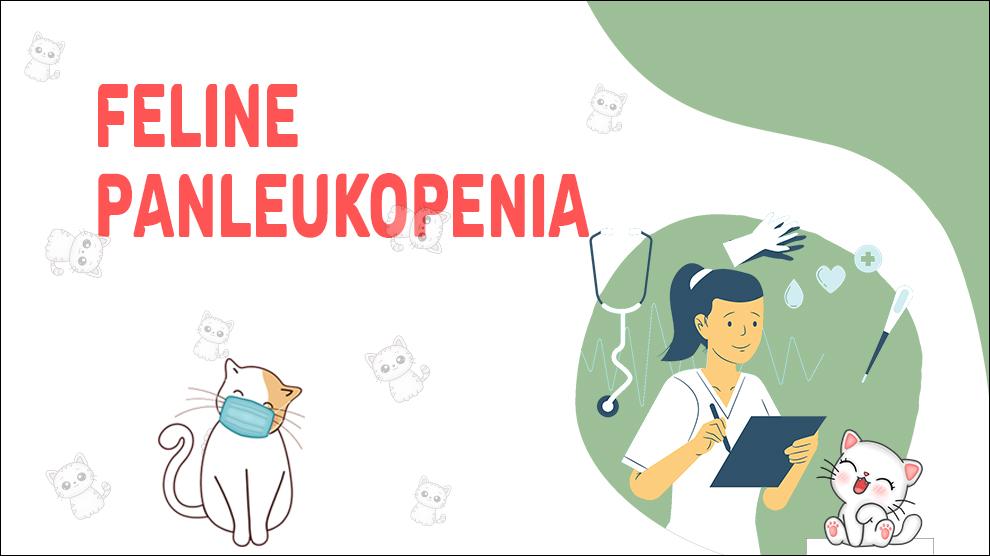What Is Feline Panleukopenia?
Feline panleukopenia, also known as feline distemper, is a highly contagious viral disease that affects cats.
It is caused by the feline parvovirus, which is a close relative of the canine parvovirus.
Feline panleukopenia is a serious and potentially fatal disease that primarily affects young cats and kittens.
Clinical Signs Of Feline Panleukopenia
Feline panleukopenia can cause a range of symptoms, including:
- Lethargy
- Loss of appetite
- Vomiting
- Diarrhea, which may be bloody
- Dehydration
- Fever
- Weakness
- Anemia
- Seizures
- Death
- Depression
- Nasal Discharge
- Abdominal Pain
- Weight Loss
- Collapse
- Skin Bruises
Symptoms usually appear 3-5 days after exposure to the virus and can last up to 10 days.
In severe cases, the disease can progress rapidly and cause death within 2-3 days.
Treatment Options For Feline Panleukopenia
There is no specific cure for feline panleukopenia, so treatment is focused on supportive care to help the cat's immune system fight the virus.
This includes:
- Fluid therapy to prevent dehydration
- Anti-nausea medication to control vomiting
- Antibiotics to prevent secondary bacterial infections
- Nutritional support to maintain the cat's strength
In severe cases, hospitalization may be necessary, and the cat may require intensive care.
Home Remedies For Feline Panleukopenia
There are no effective home remedies for feline panleukopenia. Treatment requires supportive care and should be administered by a veterinarian.
How To Prevent Feline Panleukopenia?
Prevention is the best way to protect cats from feline panleukopenia.
This can be achieved through vaccination. Kittens should receive a series of vaccines starting at 6-8 weeks of age and continuing every 3-4 weeks until they are 16 weeks old.
Adult cats should receive a booster vaccine annually. In addition to vaccination, good hygiene practices can help prevent the spread of the virus.
This includes regularly cleaning and disinfecting food and water dishes, litter boxes, and bedding.
Cats should also be kept indoors to prevent exposure to infected cats and contaminated environments.
Affected Cat Breeds Of Feline Panleukopenia
All breeds of cats can be affected by feline panleukopenia, but the disease is most common in young cats and kittens, particularly those that have not been vaccinated.
Causes For Feline Panleukopenia
Causes:
Feline panleukopenia is caused by the feline parvovirus, which is a highly contagious virus that is shed in the feces and urine of infected cats.
The virus can survive in the environment for months and can be transmitted through direct contact with an infected cat, as well as indirect contact with contaminated objects such as food dishes, litter boxes, and bedding.
When To See A Vet For Feline Panleukopenia?
If your cat is exhibiting any of the symptoms of feline panleukopenia, it is important to see a veterinarian as soon as possible.
Feline panleukopenia is a serious and potentially fatal disease, particularly in young cats and kittens.
Early diagnosis and treatment can improve the cat's chances of survival.
Food Suggestions For Feline Panleukopenia
In terms of food suggestions, it is important to offer small, frequent meals of a bland diet such as boiled chicken and rice to help manage vomiting and diarrhea.
It is also important to encourage your cat to drink water to prevent dehydration.
Conclusion
Feline Panleukopenia is a serious and potentially deadly disease that can be prevented through regular vaccination and good hygiene practices.
If you suspect that your cat may have Feline Panleukopenia, seek veterinary care immediately to increase the chances of survival.











